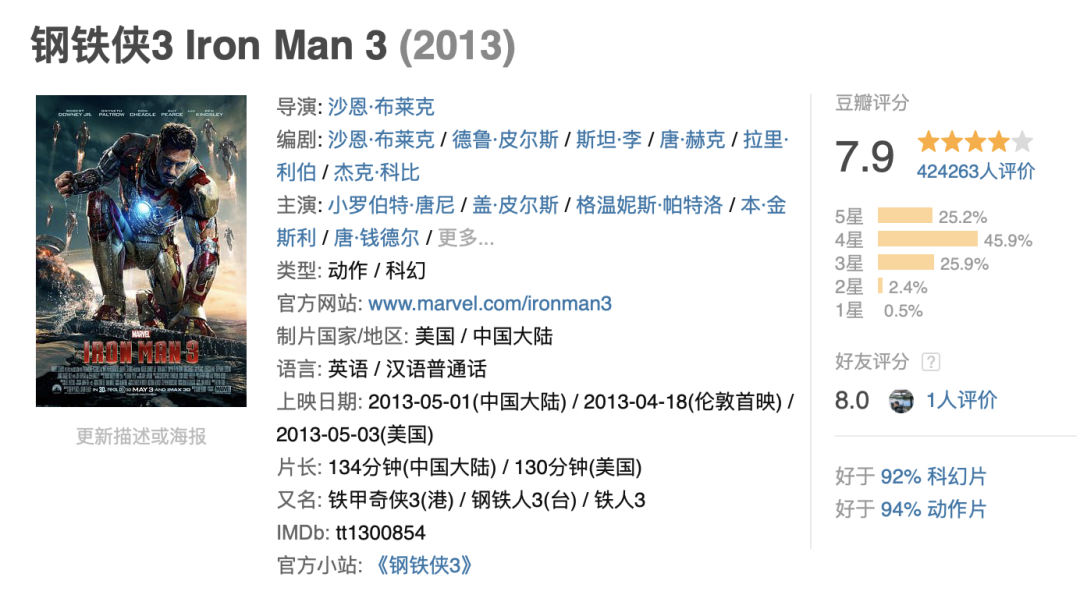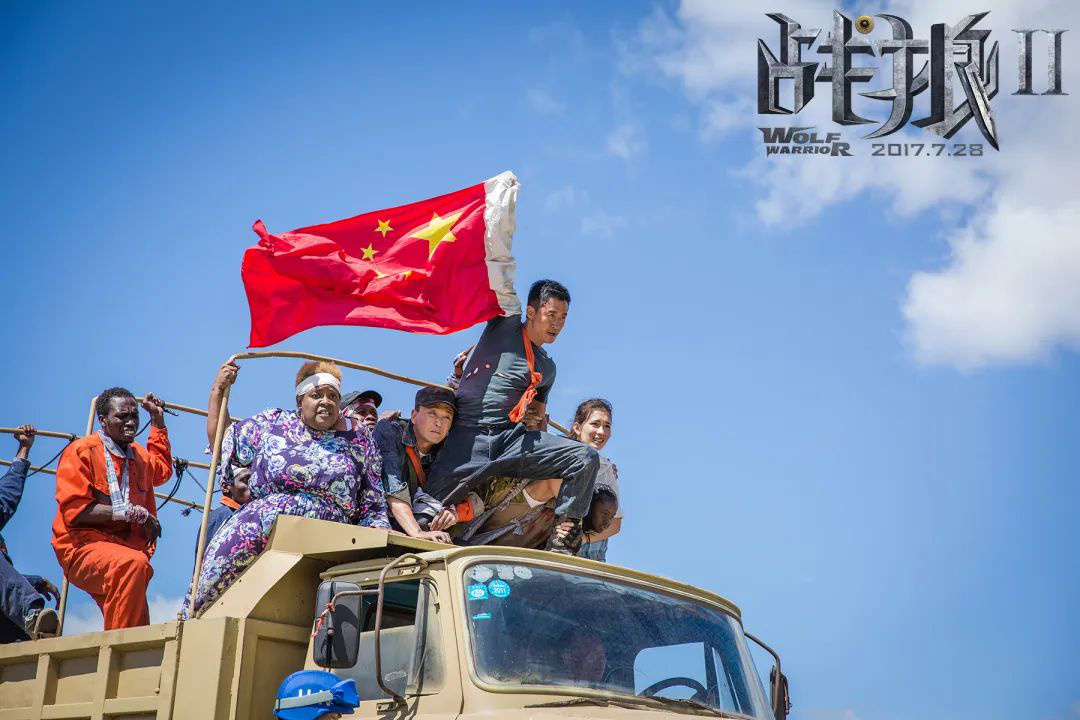According to the website of the Inner Mongolia government on the 6th, the People’s Government of Inner Mongolia issued a notice on printing and distributing the implementation plan for the comprehensive work of energy conservation and emission reduction in the "14th Five-Year Plan" of the autonomous region. Among them, it is proposed that by 2025, diesel vehicles with emission standards of national III and below will be basically eliminated, the proportion of new energy and clean energy buses in the whole region will reach 80%, and the railway freight volume will increase by about 10% compared with 2020; The travel rate of public transport in the main urban areas of 12 Union cities reached 20%, and the green travel rate of urban traffic reached 65%.
Implementation Plan of Comprehensive Work of Energy Conservation and Emission Reduction in the Tenth Five-Year Plan of Inner Mongolia Autonomous Region
In order to implement the spirit of "Notice of the State Council on Printing and Distributing the Comprehensive Work Plan for Energy Conservation and Emission Reduction in the 14th Five-Year Plan" (Guo Fa [2021] No.33), vigorously promote energy conservation and emission reduction, and help achieve the goal of peak carbon dioxide emissions and carbon neutrality, this plan is formulated in combination with the actual situation of the autonomous region.
I. General requirements
Guided by Socialism with Chinese characteristics Thought of the Supreme Leader in the New Era, we will fully implement the spirit of the 19th National Congress of the Communist Party of China and the previous plenary sessions of the 19th National Congress, thoroughly study and implement the thought of ecological civilization of the Supreme Leader, fully implement the spirit of the important instructions given by the General Secretary of the Supreme Leader to the important speech in Inner Mongolia, adhere to the general tone of the work of keeping the word steady and striving for progress while maintaining stability, firmly take a new path of high-quality development oriented to ecological priority and green development, and thoroughly fight the tough battle of pollution prevention and control. Accelerate the establishment and improvement of a green and low-carbon circular development economic system, promote the comprehensive green and low-carbon transformation of economic and social development, ensure the completion of the "14 th Five-Year Plan" energy conservation and emission reduction targets of the autonomous region, realize the coordinated promotion of carbon reduction, pollution reduction, green expansion and growth, and build an important ecological security barrier in northern China.
Second, the main objectives
By 2025, the energy consumption per unit area GDP in the whole region will be reduced by 15% compared with 2020, and the total energy consumption will be reasonably controlled. The total discharge of chemical oxygen demand, ammonia nitrogen, nitrogen oxides and volatile organic compounds will be reduced by 8%, 8%, 10% and more than 10% respectively compared with 2020. Policies, measures and institutional mechanisms for energy conservation and emission reduction have been improved, energy utilization efficiency and emission control of major pollutants have been significantly improved, energy efficiency and emission of major pollutants in key industries have basically reached the domestic advanced level, and economic and social development has changed from resource-dependent to innovation-driven, from extensive high-carbon to green low-carbon, and from decentralized low-efficiency to intensive high-efficiency.
Three, the implementation of key projects of energy conservation and emission reduction
(1) Green upgrading projects for key industries. Focusing on industries with high energy consumption and high emissions such as chemical industry, steel, nonferrous metals, building materials, coking and coal chemical industry, we will comprehensively promote energy-saving transformation and deep treatment of pollutants, formulate implementation plans for energy-saving technological transformation, and organize the implementation of major energy-saving and emission reduction projects. Strengthen the innovation and application of energy-saving technology and equipment in key energy-using industries, popularize energy-saving technologies such as high-efficiency rectification system, high-temperature and high-pressure dry quenching, and oxygen-enriched intensified smelting, and encourage the blast furnace to be — Converter long-flow steelmaking is transformed into electric furnace short-flow steelmaking. Promote ultra-low emission transformation of steel, cement and coking industries and coal-fired boilers. By 2025, more than 80% of the steel production capacity in the whole region will be transformed into ultra-low emission, and coal-fired boilers reserved in key areas and coal-fired boilers (including electricity) with 65 tons/hour or above in other areas will fully realize ultra-low emission. We will carry out clean production in key industries and transform industrial wastewater into resources. Promote the improvement of energy efficiency of new infrastructure, promote the green energy-saving transformation of existing data centers, encourage the substitution of green electricity, and promote efficient refrigeration technology, advanced ventilation technology, waste heat utilization technology and energy management system. Optimize the planning and layout of data centers. In principle, newly-built large-scale and super-large-scale data centers are laid out within the data center cluster of national hub nodes, reaching the construction standard of green data centers, and the PUE value (power utilization efficiency) is not more than 1.3. During the "Fourteenth Five-Year Plan" period, the added value energy consumption of industrial units above designated size decreased by 20%, and the water consumption per 10,000 yuan of industrial added value decreased by 13%. By 2025,Through the implementation of energy-saving and carbon reduction actions, the proportion of production capacity and data centers in key industries such as steel, electrolytic aluminum, cement, flat glass, ethylene, synthetic ammonia and calcium carbide has reached the benchmark level of energy efficiency, exceeding 30%. (Autonomous Region Department of Industry and Information Technology, Development and Reform Commission, Department of Ecology and Environment, Market Supervision Bureau, Energy Bureau, Big Data Center, etc. are responsible according to the division of responsibilities, and the administrative offices of various leagues, municipal people’s governments and people’s governments at the county level are responsible for implementation. The following are required by the administrative office of the Union and the Municipal People’s Government, and the people’s governments at the county level are responsible for the implementation, and are no longer listed)
(II) Energy conservation and environmental protection upgrading project in the park. Carry out comprehensive diagnosis of green and low-carbon cycle development in the park, find weak links in green industry agglomeration, energy resource utilization and clean production, and systematically tap the green development potential of the park. In principle, new projects with high energy consumption and high emissions should enter the park and promote industrial enterprises to gather in the park. Promote the overall optimization of the energy system in industrial parks and encourage the priority use of renewable energy. We will jointly build and share public infrastructure such as sewage treatment and reclaimed water reuse in the park, and carry out systematic renovation of the district pipe network for sewage treatment plants with abnormal influent concentration. Promote the comprehensive utilization of industrial solid waste and enhance the centralized storage and disposal capacity of hazardous waste. Promote the construction of "green island" projects such as centralized treatment of volatile organic compounds, electroplating wastewater and characteristic pollutants. Encourage industrial parks with perfect infrastructure, large power load and strong self-peak shaving ability to carry out low-carbon demonstration construction. By 2025, the recycling level, energy conservation and environmental protection level of industrial parks above the autonomous region level will be significantly improved, and a number of representative energy conservation and environmental protection demonstration parks will be built. (The Development and Reform Commission of the Autonomous Region, the Department of Industry and Information Technology, and the Department of Ecology and Environment are responsible according to the division of responsibilities)
(3) Urban green energy-saving renovation project. Advocate the concept of green planning and design, and comprehensively promote urban green planning, construction and operation management. Strictly implement the mandatory energy-saving standards for new buildings, and carry out demonstration projects such as ultra-low energy-consuming buildings, near-zero energy-consuming buildings and zero-carbon buildings. Promote the integrated application of solar photovoltaic in urban buildings. Organize and implement key demonstration projects of green transformation such as central air conditioning, data center, industrial park and cold chain logistics, greatly improve the energy efficiency level of refrigeration system, promote the large-scale application of clean heating, industrial waste heat and renewable energy in urban heating, and greatly increase the market share of clean heating and green and efficient refrigeration products in urban areas. Carry out leakage control of public water supply network and strive for national pilot construction. By 2025, green building standards will be fully implemented in new urban buildings, and 10 million square meters of energy-saving renovation of existing residential buildings will be completed, and green buildings will develop from single buildings and groups to small areas and regions; Cultivate low-carbon cities, sponge cities and "waste-free cities" 1— 2 demonstration pilots. (Autonomous Region Housing and Urban-Rural Development Department, Ecological Environment Department, Development and Reform Commission, Natural Resources Department, Transportation Department, Market Supervision Bureau, Energy Bureau, etc. are responsible according to the division of responsibilities)
(4) Transportation and logistics energy-saving and emission reduction projects. Carry out the construction of green comprehensive transportation system, improve the infrastructure such as charging and replacing electricity, filling (gas), hydrogenation and airport shore electricity, accelerate the transformation of transportation structure and travel mode, and implement clean energy substitution. Implement the "bus priority" strategy and guide the public to give priority to green and low-carbon travel modes. Continue to promote the "revolution of iron" in bulk cargo transportation and increase the proportion of clean transportation. Improve the level of railway electrification and popularize low-energy transportation equipment. Strictly implement the system of scrapping and updating old means of transport. Fully implement the national six emission standards for automobiles and the national four emission standards for off-road mobile diesel machinery, and vigorously promote the early elimination and renewal of old motor vehicles. In-depth implementation of clean diesel engine action, encourage heavy diesel trucks to update and replace. Implement the vehicle emission inspection and maintenance system and strengthen the management of vehicle emission recall. Vigorously develop intelligent transportation and actively use big data to optimize transportation organization mode. Accelerate the construction of green warehousing and encourage the construction of green logistics parks. Accelerate the popularization and application of standardized logistics turnover boxes. Comprehensively promote green express packaging, and guide e-commerce enterprises and postal express delivery enterprises to purchase and use green certified express packaging products. By 2025, diesel vehicles with emission standards of Grade III and below will be basically eliminated, the proportion of new energy and clean energy buses in the whole region will reach 80%, and the railway freight volume will increase by about 10% compared with 2020; The travel rate of public transport in the main urban areas of 12 Union cities reached 20%, and the green travel rate of urban traffic reached 65%.(Autonomous Region Transportation Department, Development and Reform Commission, Industry and Information Technology Department, Public Security Department, Finance Department, Ecological Environment Department, Housing and Urban-Rural Construction Department, Commerce Department, Market Supervision Bureau, Energy Bureau, Inner Mongolia Postal Administration, China Railway Hohhot Bureau Group Co., Ltd., Inner Mongolia Jitong Railway [Group] Co., Ltd. are responsible according to the division of responsibilities)
(five) energy saving and emission reduction projects in agriculture and animal husbandry. Promote the use of fuel-saving and environmentally-friendly agricultural machinery and equipment, develop energy-saving agricultural greenhouses, and encourage rural housing to adopt new construction technologies, use green building materials, use photovoltaic power generation systems, and use clean heating equipment. We will carry out actions to improve rural human settlements, improve the treatment capacity of rural domestic sewage and garbage, basically eliminate a large area of rural black and odorous water bodies, and significantly improve the village appearance. Strengthen the prevention and control of agricultural non-point source pollution, promote the reduction of chemical fertilizers and pesticides, comprehensively utilize straws, and accelerate the recycling of agricultural film and pesticide packaging wastes. Further promote the comprehensive utilization of livestock manure in large-scale farms. By 2025, the treatment rate of domestic sewage in rural areas will reach about 32%, the comprehensive utilization rate of straw will be more than 90%, the utilization rates of chemical fertilizers and pesticides for major crops will reach more than 43%, the comprehensive utilization rate of livestock manure will reach more than 84%, and the coverage rates of green prevention and control and unified prevention and control will reach 55% and 45% respectively. (The Agriculture and Animal Husbandry Department, the Ecological Environment Department, the Energy Bureau and the Rural Revitalization Bureau of the autonomous region take the lead, and the Development and Reform Commission, the Industry and Information Technology Department, the Housing and Urban-Rural Construction Department, the Water Resources Department and the Market Supervision Bureau of the autonomous region are responsible according to the division of responsibilities)
(six) the energy efficiency improvement project of public institutions. Accelerate the energy-saving transformation of existing building envelope, heating, refrigeration, lighting and other facilities and equipment in public institutions, and promote the use of energy-saving new products and technologies. Innovate the energy-saving management mode of public institutions and encourage the adoption of contract energy management modes such as energy cost custody. Improve the cleanliness level of office and living energy in public institutions, and promote the use of clean energy such as solar energy and wind energy. Actively carry out green low-carbon technology application demonstration case propaganda, and promote the application of green low-carbon technology. Strict implementation of energy-saving and environmental protection products priority procurement and mandatory procurement system, public institutions take the lead in purchasing energy-saving, low-carbon, recycling and other green products. Take the lead in eliminating old cars, take the lead in purchasing and using energy-saving and new-energy vehicles, and equip new and existing parking lots with charging facilities for electric vehicles or reserve installation conditions for charging facilities. Actively promote energy-saving and efficient office equipment, and rationally use energy-consuming equipment such as air conditioners and elevators. Continue to carry out demonstration activities, and actively select the "leaders" in the establishment and energy efficiency of demonstration units of conservation-oriented public institutions. By 2025, we will strive to create more than 80% of party and government organs as conservation-oriented organs, and give full play to the demonstration and leading role of public institutions. (Autonomous Region Organs Administration Bureau, Housing and Urban-Rural Development Department, Education Department, Science and Technology Department, Health and Wellness Committee, Sports Bureau, etc. are responsible according to the division of responsibilities)
(seven) pollutant emission reduction projects in key areas. We will continue to push forward the key areas of air pollution prevention and control in autumn and winter, and intensify the structural adjustment and pollution control of key industries. Focusing on the central and western regions of the autonomous region, efforts will be made to promote the coordinated emission reduction of volatile organic compounds and nitrogen oxides, and strengthen the coordinated control of fine particles and ozone. Promote the ecological protection and high-quality development of the Yellow River Basin, solidly promote urban sewage and garbage treatment and pollution control projects such as industrial and agricultural non-point sources and tailings ponds, and strive to fight a tough battle for ecological protection and governance of the Yellow River; Implement deep water-saving and water-control actions, strengthen pollution control of important tributaries, and carry out investigation and rectification of sewage outlets entering the river. By 2025, the water quality of the main stream of the Yellow River will reach Grade II. (The Department of Ecology and Environment, the Department of Industry and Information Technology and the Department of Water Resources of the Autonomous Region take the lead, and the Development and Reform Commission, the Department of Housing and Urban-Rural Development, the Department of Transportation and the Energy Bureau of the Autonomous Region are responsible according to their division of responsibilities)
(eight) clean and efficient utilization of coal project. Based on the positioning of Inner Mongolia as an important national energy and strategic resource base, and on the premise of ensuring national energy security and power supply security, we will persist in establishing first and then breaking, strictly and reasonably control the growth of coal consumption, do a good job in clean and efficient utilization of coal, steadily and orderly promote the "three reforms linkage" of coal-saving and consumption-reducing transformation, heating transformation and flexible transformation of existing coal-fired power units, and continue to promote the ultra-low emission transformation of coal-fired power units. Intensify the elimination of small coal-fired boilers and backward small coal-fired thermal power plants (including self-provided power plants), and complete the task of shutting down and integrating coal-fired boilers within a heating radius of 15 kilometers of cogeneration power plants with a capacity of 300,000 kilowatts or more. Strengthen the management of key coal-consuming industries such as steel, foundry and building materials, and promote the substitution of electric energy. Continue to expand the central heating area of cogeneration, promote industrial waste heat central heating, promote "double substitution of loose coal" in a scientific and orderly manner, and promote the application of electric boilers, heat pumps and decentralized electric heating in old urban areas where urban-rural junctions and heating pipe networks cannot reach, reducing the demand for heating coal. By 2025, 20 million kilowatts of energy-saving transformation and 30 million kilowatts of flexibility transformation of coal-fired power units will be completed; Promote the construction of clean heating demonstration cities such as Baotou City, Hohhot City, Wulanchabu City and Bayannaoer City, and promote the "gasification of Inner Mongolia" action. The western part of Inner Mongolia will basically realize "county ventilation" and the eastern part will realize "pipeline natural gas"City ventilation "; The proportion of coal consumption in the whole region has dropped below 75%, and non-fossil energy accounts for about 18% of energy consumption. (Autonomous Region Energy Bureau, Department of Ecology and Environment, Department of Industry and Information Technology, Department of Housing and Urban-Rural Development, Market Supervision Bureau, etc. are responsible according to the division of responsibilities)
(9) Comprehensive improvement project of volatile organic compounds. Promote the source substitution project of low VOCs raw and auxiliary materials and products, and implement the whole process of pollutant control. Focus on industries such as industrial painting, packaging and printing, and promote the use of paints, inks, adhesives and cleaning agents with low volatile organic compounds. Deepen the treatment of volatile organic compounds pollution in petrochemical and chemical industries, and comprehensively improve the collection rate of waste gas, the synchronous operation rate of treatment facilities and the removal rate. The volatile organic liquid storage tank was reformed, and the floating roof tank was popularized with full liquid floating tray and high-efficiency double sealing technology, and the high-concentration waste gas in the wastewater system was collected and treated separately. By 2025, the proportion of solvent-based industrial coatings and inks will be reduced by 20% and 10% respectively, and the amount of solvent-based adhesives will be reduced by 20%. (The Department of Industry and Information Technology and the Department of Ecology and Environment of the Autonomous Region are responsible according to the division of responsibilities)
(ten) environmental infrastructure level improvement project. Accelerate the construction of urban drainage pipe network, promote the renewal and transformation of old pipe network, vigorously promote the mixed and staggered transformation of pipe network in urban built-up areas along the main stream of the Yellow River, and promote the transformation of rain and sewage diversion according to local conditions. Accelerate the construction of an environmental infrastructure system that integrates sewage, garbage, solid waste, hazardous waste and medical waste treatment and disposal facilities and monitoring and supervision capabilities, and improve the level of recycling and resource utilization. Continue to promote the construction of industrial solid waste disposal and comprehensive utilization facilities in industrial parks, and strengthen the construction of recycling, sorting and disposal facilities. Promote the construction of kitchen waste treatment facilities. We will build and improve the classification system of domestic waste and the system of classified delivery, collection, transportation and treatment, and fill in the shortcomings of classified collection and transshipment facilities. By 2025, the harmless disposal rate of municipal sludge will reach more than 90%, and the incineration capacity of municipal solid waste will account for about 65%. (Autonomous Region Development and Reform Commission, Housing and Urban-Rural Development Department, Ecological Environment Department, etc. are responsible according to the division of responsibilities)
Fourth, improve the policy mechanism of energy conservation and emission reduction
(1) Optimize and improve the dual control of energy consumption. Adhere to the priority of energy conservation, strengthen the management of binding indicators of energy consumption intensity, take the energy output rate as an important basis, comprehensively consider the development stage and other factors, and reasonably determine the energy consumption intensity reduction targets of each alliance city. Effectively enhance the flexibility of total energy consumption management, and each league city reasonably determines the annual target of total energy consumption in the region according to the annual target of reducing energy intensity and the annual target of GDP growth in the region issued by the autonomous region; The total energy consumption target is an expected index, and the alliance cities whose economic growth rate exceeds the expected target can adjust the total energy consumption target accordingly. The total energy consumption of the allied cities that have completed the incentive target of reducing energy consumption intensity is exempted from assessment. During the 14th Five-Year Plan period, the electricity consumption of new renewable energy sources in various regions is not included in the total energy consumption assessment, and the energy consumption of raw materials is not included in the dual-control assessment of energy consumption intensity and total energy consumption. Implement the policy of separate energy consumption for major projects of the state and the autonomous region. For major projects included in the scope of separate energy consumption, part of the energy consumption undertaken by the state and the autonomous region shall be reduced in the assessment of double control of energy consumption. Improve the energy budget management system, realize the transformation from total energy consumption control to energy intensity balance, strengthen the guidance of energy intensity benchmarking for new projects, reasonably ensure the energy demand of high-quality projects with low energy intensity, and effectively resolve the impact of high energy intensity projects on regional energy intensity. Optimize the frequency of dual-control assessment of energy consumption, implement "annual assessment, mid-term assessment and five-year assessment", and make overall assessment of energy consumption intensity targets during the "Tenth Five-Year Plan" period.Strengthen the connection between the policy of dual control of energy consumption and the objectives and tasks of peak carbon dioxide emissions and carbon neutrality. (The Development and Reform Commission of the autonomous region takes the lead, and the Department of Industry and Information Technology, Statistics Bureau and Energy Bureau of the autonomous region are responsible according to the division of responsibilities)
(2) Improve the total pollutant discharge control system. Adhere to precise pollution control, scientific pollution control and pollution control according to law, take the total pollutant discharge control system as an important starting point to accelerate green and low-carbon development, promote structural optimization and adjustment, and improve the level of environmental governance, promote the implementation of key emission reduction projects, and form effective emission reduction capabilities. Optimize the decomposition method of total emission reduction indicators, and work out the action plan for total emission reduction of major pollutants in the "14th Five-Year Plan" according to the principles of monitoring, verification and assessment, and assign emission reduction of key projects to local governments, where pollution control tasks are heavier, and undertake relatively more emission reduction tasks. Guide all regions to implement emission reduction projects on an annual basis and strengthen the verification and accounting of total emission reduction. Under the unified arrangement and deployment of the state, we will promote the connection with the systems of pollutant discharge permit and environmental impact assessment and approval. (responsible for the ecological environment department of the autonomous region)
(3) Resolutely curb the blind development of low-level projects with high energy consumption and high emissions. Strictly control high energy consumption and high emission projects (hereinafter referred to as "two high" projects) from four aspects: industrial access, energy saving review, environmental impact assessment and industrial chain. In addition to being included in the national industrial planning and layout plan, we will strictly control the new production capacity and new projects in the "two high" industries in accordance with the provisions of the autonomous region’s "Several Safeguards to Ensure the Completion of the Targets and Tasks of Double Control of Energy Consumption in the 14th Five-Year Plan" and "Resolutely curb the low-level blind development of the" two high "projects". The establishment of "two high" project management ledger, focusing on petrochemical, coking, chemical industry, coal chemical industry, building materials, steel, nonferrous metals, coal and electricity industries with a design energy consumption (equal value) of more than 50,000 tons of standard coal, comprehensively sorting out the "two high" projects under construction, proposed construction and stock, and implementing list management, classified disposal and dynamic monitoring. According to the Implementation Plan of Inner Mongolia Autonomous Region on Promoting Energy Saving and Carbon Reduction in Key Areas with Strict Energy Efficiency Constraints, an enterprise energy efficiency list is established, and all the stock projects below the industry energy efficiency benchmark level should reach the national benchmark level through technological transformation; For projects with energy efficiency between the benchmark level and the benchmark level, encourage the implementation of transformation and upgrading with reference to the national benchmark level, and strive to enter the list of industry energy efficiency "leaders"; For new projects,All are designed and built according to the national energy efficiency benchmark level; Resolutely eliminate projects that cannot be completed on schedule, and the elimination time limit shall not exceed 3 years. Strengthen the supervision of the whole process of the "two high" projects, and resolutely stop and take down the "two high" projects that do not meet the policy requirements, violate the rules and regulations, are not approved for construction first, are inconsistent with the approved construction, exceed the approved energy consumption, and exceed the standard discharge, and severely investigate and deal with them according to the law. Strict financial discipline, improve the "two high" project financing policy. (Autonomous Region Development and Reform Commission, Department of Industry and Information Technology, Department of Ecology and Environment, Energy Bureau take the lead, autonomous region market supervision bureau, local financial supervision bureau, Hohhot Central Branch of the People’s Bank of China, Inner Mongolia Banking Insurance Regulatory Bureau, etc. are responsible according to the division of responsibilities)
(4) Improve the system of regulations and standards. Implement the Energy Conservation Law of People’s Republic of China (PRC), Circular Economy Promotion Law of the People’s Republic of China, Cleaner Production Promotion Law of People’s Republic of China (PRC), Environmental Impact Assessment Law of the People’s Republic of China, Ecological Environment Monitoring Regulations, Civil Building Energy Conservation Regulations and Public Institutions Energy Conservation Regulations and other laws and regulations. Revise a number of local standards for energy conservation in autonomous regions with "two high" industries, and revise the Measures for the Implementation of People’s Republic of China (PRC) Energy Conservation Law in Inner Mongolia Autonomous Region and the Implementation Measures for Energy Conservation Review of Fixed Assets Investment Projects in Inner Mongolia Autonomous Region. In accordance with national requirements, we will carry out energy efficiency and water efficiency "leaders" to lead the action. Strictly implement the energy consumption limit standards and pollutant emission standards, strictly implement the national standard for limiting the content of volatile organic compounds in consumer goods and the emission standards of air pollution in key industries involving volatile organic compounds, and import off-road mobile machinery and engines to implement the current national emission standards for new production equipment. (The Development and Reform Commission of the Autonomous Region, the Department of Ecology and Environment, the Department of Justice, the Department of Industry and Information Technology, the Department of Finance, the Department of Housing and Urban-Rural Development, the Department of Transportation, the Market Supervision Bureau, and the Office Affairs Administration are responsible for the division of responsibilities)
(5) Improve the economic policy mechanism. We will implement financial support policies for energy conservation and emission reduction, make overall arrangements for special funds, and increase financial support for key energy conservation and emission reduction projects such as energy conservation transformation, comprehensive energy efficiency improvement, elimination of backwardness and elimination of excess capacity, research and development of major energy-saving technologies and industrialization demonstration. Actively strive for investment-related special projects in the central budget, national special incentive funds for energy-saving work, etc., and reward areas where the evaluation results of energy-saving target responsibility are over-completed. We will implement a more powerful energy-saving electricity price policy, adjust and improve the electricity price policy of high-energy-consuming industries and the electricity market trading policy, so that all users of high-energy-consuming industries with a voltage of 10 kV or above will enter the electricity market, and the trading price of power companies in high-energy-consuming industries determined by the autonomous region will not be restricted. Integrate differentiated electricity price policies, establish a unified ladder electricity price system for high-energy-consuming industries, and do not increase electricity consumption for existing enterprises with energy efficiency reaching the benchmark level and enterprises under construction and proposed to be built with energy efficiency reaching the benchmark level, and implement ladder electricity prices according to the energy efficiency level gap; We will continue to implement punitive trading electricity prices for electricity consumption of restricted production capacity (devices) in high energy-consuming industries. The increase in electricity charges is specially used to support the technological transformation of energy saving, pollution reduction and carbon reduction in enterprises. Improve the green financial system, vigorously develop green credit, support energy conservation and emission reduction in key industries, make good use of carbon emission reduction support tools and support special refinancing for clean and efficient use of coal. Encourage qualified areas to explore the establishment of supporting policies such as financial discount, bonus, risk compensation and credit guarantee for green loans. Accelerate the development of green bonds and support qualified enterprises to issue green corporate bonds.Support qualified energy-saving and emission reduction enterprises to go public for financing and refinancing. Actively promote enterprises in high-risk areas to insure environmental pollution liability insurance. Implement preferential tax policies for environmental protection, energy saving and water saving, and comprehensive utilization of resources. Cooperate with the state to improve the monitoring technology and emission calculation method of volatile organic compounds. Deepen the reform of heating system and improve the price mechanism of urban heating. Establish and improve the dynamic adjustment mechanism of urban sewage treatment fee collection standards, and explore the establishment of sewage treatment payment mechanism for beneficiary farmers. (Autonomous Region Development and Reform Commission, Department of Finance, Department of Industry and Information Technology, Department of Ecology and Environment, Department of Housing and Urban-Rural Development, Local Financial Supervision Bureau, Energy Bureau, Hohhot Central Sub-branch of the People’s Bank of China, Inner Mongolia Banking Insurance Regulatory Bureau, Inner Mongolia Securities Regulatory Bureau, Inner Mongolia Taxation Bureau, etc. are responsible according to the division of responsibilities)
(6) Improve the market-oriented mechanism for energy conservation and emission reduction. Encourage all regions to establish a paid purchasing and storage mechanism for energy-saving indicators, and strengthen regional overall planning for energy consumption reduction indicators. Explore the market-oriented trading of energy-saving indicators, gradually form a cost-benefit mechanism of "energy users pay and energy-saving users benefit", and promote the flow and agglomeration of energy elements to areas with high-quality projects, enterprises, industries and good economic development conditions. Actively connect with the national carbon emission trading market, and cultivate and develop the carbon emission market in the autonomous region. Cultivate and develop the emission trading market, and encourage qualified areas to expand the pilot scope of emission trading. Promote green power certificate trading, and encourage market players to complete the consumption of renewable energy power through green power certificate trading. We will implement contract energy management modes such as energy cost custody, and actively promote "one-stop" comprehensive service modes such as energy-saving consultation, diagnosis, design, financing, renovation and custody. Give full play to the role of peak carbon dioxide emissions and carbon neutral expert database in the autonomous region. We will promote third-party hosting services for comprehensive environmental management in industrial parks, and guide all kinds of capital to participate in energy conservation and carbon reduction management, environmental management and services, investment construction and operation. Implement the energy efficiency labeling management system and promote green product certification and energy-saving low-carbon environmental protection product certification. (Autonomous Region Development and Reform Commission, Department of Ecology and Environment, Department of Industry and Information Technology, Department of Finance, Market Supervision Bureau, Energy Bureau, etc. are responsible according to the division of responsibilities)
(seven) to strengthen the capacity building of statistical monitoring. Strictly implement the reporting system of energy utilization status of key energy-using units, strengthen the construction and application of energy consumption online monitoring system of key energy-using units, and improve the ability of energy consumption monitoring and analysis. Strengthen the supervision of energy measuring instruments, improve the technical specifications and standard system of energy measurement, strengthen the main responsibility of energy-using units, and strengthen the construction of statistical capacity. We will improve and refine the classified statistics of energy varieties, improve the statistical indicators and methods of energy consumption in industries, construction, transportation and other fields, improve and standardize the working mechanism of energy statistics, and ensure that statistical data are comprehensive, true and objective. We will build a fixed pollution source monitoring system covering units with pollutant discharge permits, strengthen pollution source monitoring in industrial parks, and promote the installation of online monitoring facilities for key pollutant discharge units involving volatile organic compounds. Strengthen the construction of statistical grassroots teams, strengthen the audit of statistical data, prevent statistical fraud and fraud, and improve the quality of statistical data. (The Statistics Bureau of the Autonomous Region, the Development and Reform Commission, the Department of Ecology and Environment, the Department of Industry and Information Technology, the Department of Housing and Urban-Rural Development, the Department of Transportation, the Market Supervision Bureau, the Energy Bureau, etc. are responsible according to the division of responsibilities)
(eight) to expand the talent team of energy conservation and emission reduction. Strengthen the construction of energy-saving supervision team and basic capacity, improve and perfect the three-level energy-saving supervision system of autonomous regions, union cities and counties (cities, districts), and promote the establishment of energy-saving supervision institutions in union cities and counties (cities, districts) with imperfect energy-saving supervision institutions, equipped with corresponding energy-saving supervision personnel and equipment. Key energy-using units shall set up energy management posts and responsible persons as required. Strengthen the construction of grass-roots ecological and environmental supervision teams in counties and towns of Sumu, and set up full-time environmental protection personnel in key pollutant discharge units. Strengthen the training of relevant government departments, supervision and law enforcement agencies, enterprises and other energy-saving and emission-reduction staff, and improve their business level through business training, competitions and experience exchanges. (The Development and Reform Commission of the Autonomous Region, the Department of Ecology and Environment, the Department of Industry and Information Technology, and the Department of Human Resources and Social Security are responsible for the division of responsibilities)
(9) Increase the research and development, popularization and application of advanced technologies for energy conservation and emission reduction. Strengthen the research and development of new energy and new power systems, carbon capture, utilization and storage (CCUS) technologies, support the development of low-carbon transformation technologies, strengthen the research on ecosystem sink enhancement technologies, and explore the research and development of non-electric renewable energy utilization technologies. Focusing on key industries such as electric power, steel, chemical industry, nonferrous metals and construction, we will promote the development and application of technologies such as waste heat recovery and energy cascade utilization. Improve the independent research and development ability of clean and efficient utilization of coal, carry out research on key technologies for comprehensive improvement of energy conservation and environmental protection of coal-fired boilers and energy efficiency improvement of motor systems, deepen smart energy management, and comprehensively improve energy conservation and emission reduction capabilities. (Autonomous Region Science and Technology Department, Development and Reform Commission, Industry and Information Technology Department, Ecological Environment Department, Energy Bureau, etc. are responsible according to the division of responsibilities)
V. Strengthening the implementation of work
(1) Strengthen organizational leadership. All cities, departments and relevant units should resolutely implement the national decision-making arrangements on energy conservation and emission reduction and the work requirements of the autonomous region, adhere to the system concept, clarify the target responsibilities, formulate annual plans, pay close attention to the implementation of the work, and ensure the completion of the tasks of energy conservation and emission reduction in the 14 th Five-Year Plan. People’s governments at all levels take overall responsibility for energy conservation and emission reduction within their respective administrative areas, and the main person in charge is the first responsible person. It is necessary to effectively strengthen organizational leadership and deployment, fully link the local energy conservation and emission reduction targets with the five-year plan and annual plan for national economic and social development, and scientifically clarify the responsibilities of the people’s government at the next lower level, relevant departments and key units. Scientific assessment is needed to prevent the simple decomposition of objectives and tasks. State-owned enterprises should take the lead in implementing the target responsibility of energy conservation and emission reduction, and encourage stricter target management. The Development and Reform Commission of the Autonomous Region and the Department of Ecology and Environment should strengthen overall coordination, do a good job of guidance, promote the orderly and effective implementation of tasks, prevent and resolve risks in a timely manner, and report major situations to the people’s government of the autonomous region in a timely manner. (The Development and Reform Commission of the Autonomous Region and the Department of Ecology and Environment take the lead, and the relevant departments of the autonomous region are responsible according to the division of responsibilities)
(2) Strengthen supervision and assessment. Strict "Fourteenth Five-Year Plan" energy conservation and emission reduction target responsibility assessment, strengthen the use of assessment results, strengthen incentives for areas with remarkable work results, and strengthen supervision and guidance for areas with poor work. After the assessment results are examined and approved by the people’s government of the autonomous region, they will be handed over to the competent department of cadres as an important basis for the comprehensive assessment of the administrative office of the Union, the leading bodies and leading cadres of the Municipal People’s government. We will improve the assessment measures for dual control of energy consumption, increase the intensity of energy consumption and reduce the assessment weight of binding indicators, intensify the assessment of resolutely curbing the low-level blind development of "two high" projects, promoting the optimal allocation of energy resources, and implementing energy-saving measures in public institutions, give full consideration to the "off-peak season" of the market and the "peak and valley season" of energy consumption, coordinate the progress of target completion, economic situation and cross-cycle factors, and optimize the assessment frequency. Take the completion of the total emission reduction targets and tasks as an important assessment content, and compact the responsibility for emission reduction. (The Development and Reform Commission of the Autonomous Region and the Department of Ecology and Environment take the lead, and the Organization Department of the Party Committee of the Autonomous Region is responsible according to the division of responsibilities)
(3) Carry out nationwide actions. Carry out green life creation activities in the whole society, advocate a simple and moderate, green and low-carbon, civilized and healthy lifestyle, and create a green and low-carbon social trend. Organize thematic publicity activities such as Energy Conservation Publicity Week, Low Carbon Day and Environment Day, and strengthen daily publicity and education on energy conservation and emission reduction. Actively cultivate the green consumption market, guide consumers to buy green and low-carbon products such as energy-saving and new energy vehicles, high-efficiency household appliances and water-saving appliances, and guide the concept of green consumption. Vigorously promote green and low-carbon travel and advocate green life and leisure mode. Give full play to the role of industry associations, commercial organizations and public welfare organizations, develop public welfare undertakings for energy conservation and emission reduction, and encourage the public to participate in public welfare activities for energy conservation and emission reduction. Carry out voluntary commitment activities for energy conservation, and guide the public to consciously fulfill their responsibilities for energy conservation and emission reduction. (The Propaganda Department of the Party Committee of the Autonomous Region, the Development and Reform Commission, the Department of Science and Technology, the Department of Ecology and Environment, the Office Administration, the Women’s Federation, etc. are responsible according to the division of responsibilities)












































